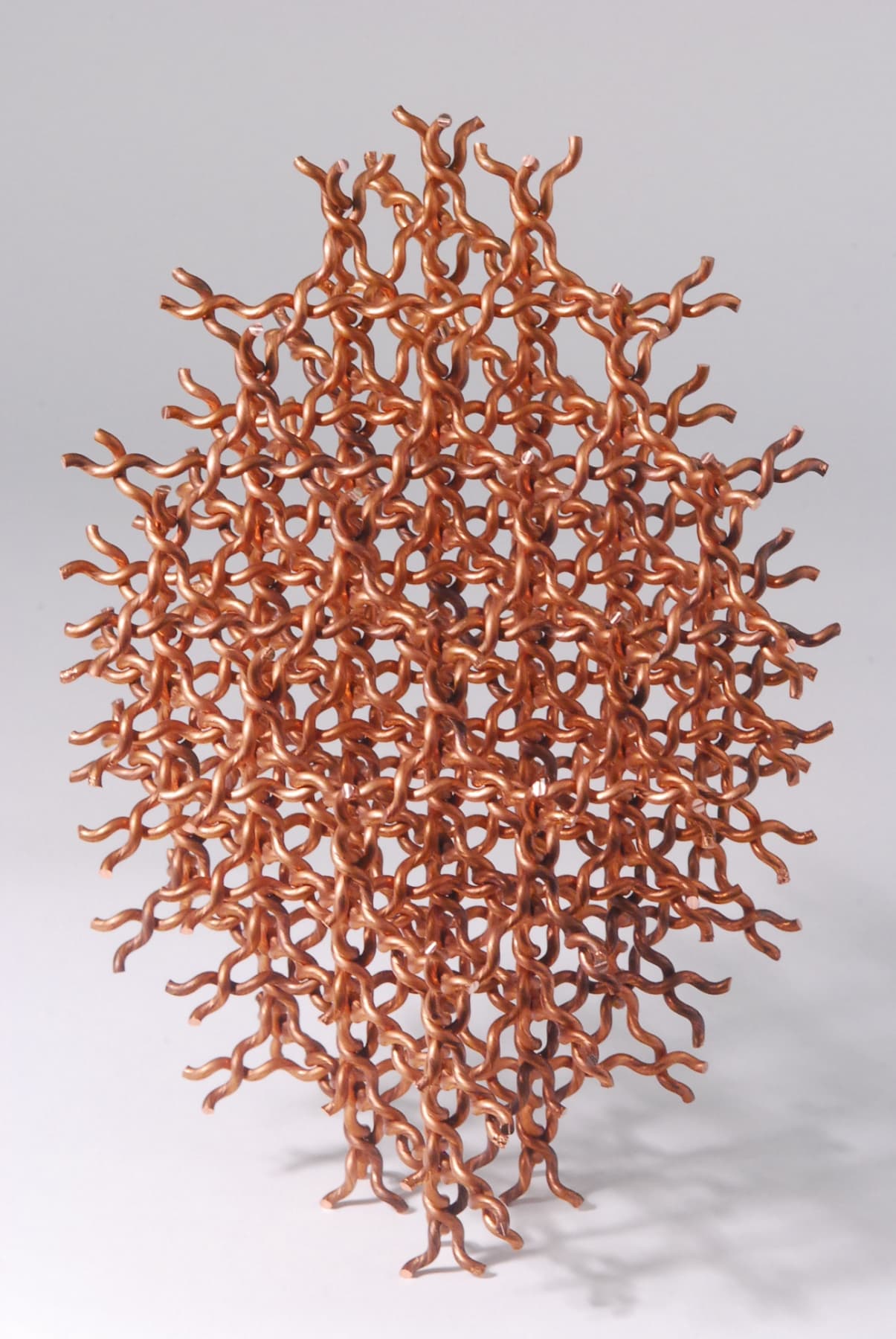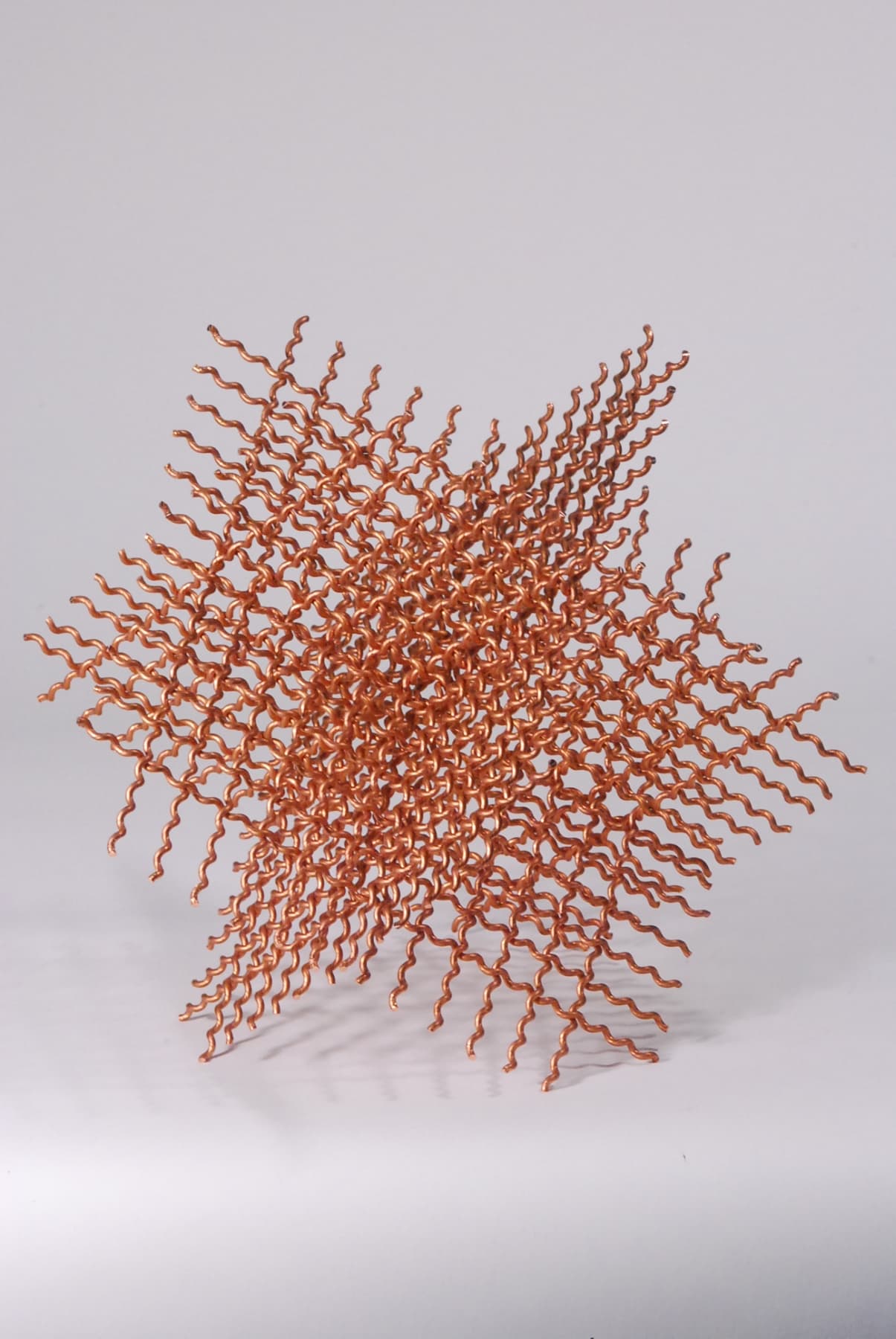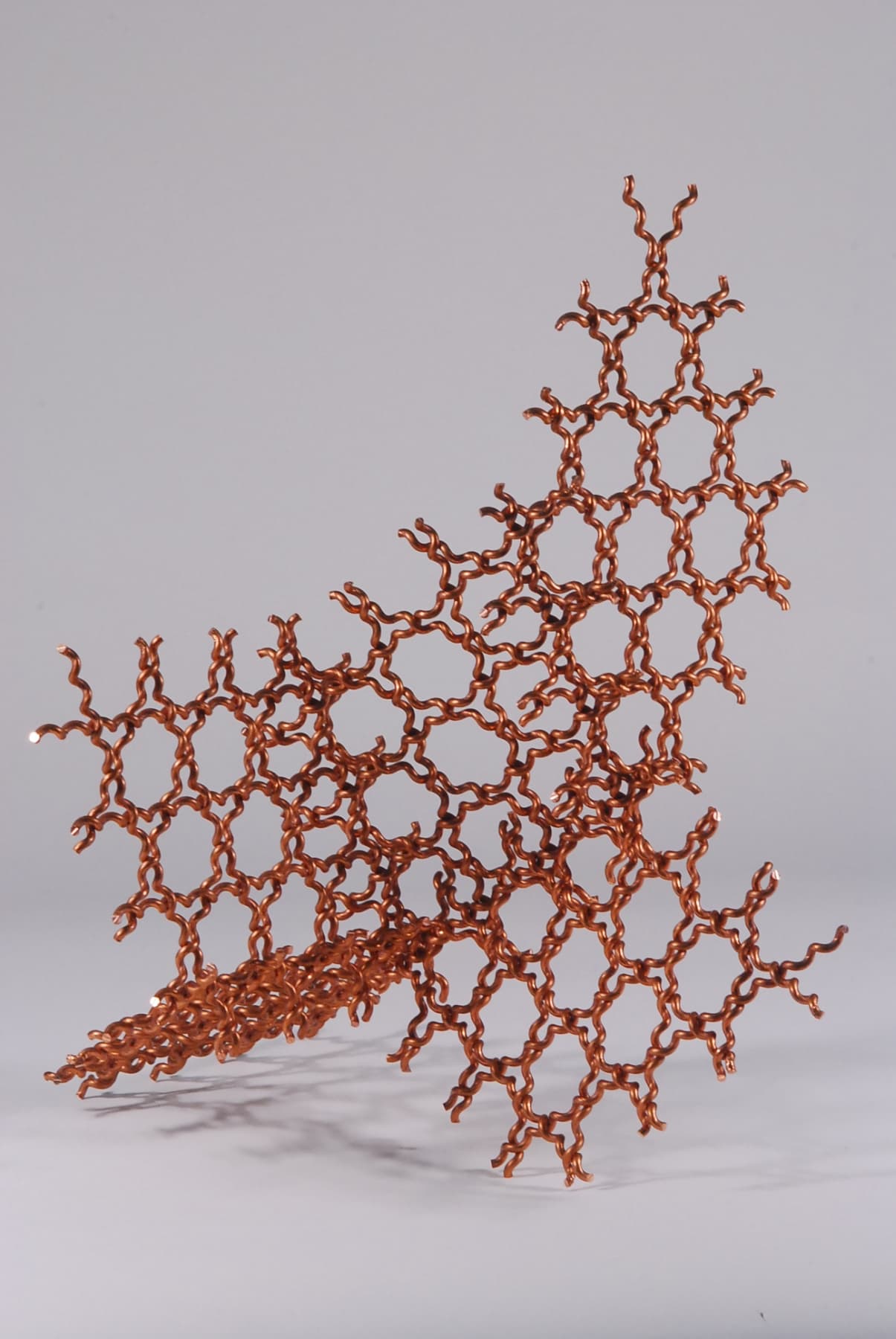Alexandru Usineviciu
Artists
Statement
ARTIST STATEMENT It was a combination between the chain mail of medieval armor, “the wire curtains” of some buildings in New York City and the minutely detailed wire jewelry of Mary Lee Hu that gave me the starting points to create my own technique of wire weaving. In early spring of 2011 I met Paul Tucker, a mathematician and a scholar, who introduced me to “Bridges” organization. Geometry being the language of my visual expression I realized that art and mathematics coexist in a perfect harmony. The helix wire is the commanding element in my work and has two functions, a unit and a connector at the same time. This system has a wide range of practical applications in architecture, sculpture, industrial and interior design, textile, jewelry etc.
Artworks

Structure 1.
9 x 6 x 6in.
copper wire
2011

The Genesis of a Woven Dice
9 x 9 x 9in.
copper wire
2011

5 Rhombic Screens
11 x 11 x 11in.
copper wire
2011